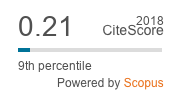CHILDRENS UNDERSTANDING OF FRACTIONS AS EXPRESSIONS OF RELATIVE MAGNITUDE
Keywords:
Problems, Fractions, Relative magnitudeAbstract
Answers of 60 fifth graders to literal and relative versions of
problems on fractions revealed a strong tendency to identify the
numerator as denoting literally the number of marked elements and the
denominator as denoting the total number of elements (literal version). On
the whole students did not accept as valid descriptors of a fraction n/m
figures which did not include, literally, n marked elements in a total of m,
even when the relationship between number of marked elements and total
number of elements was the same as that in n and m (relative version).
Findings are discussed in terms of the concept of relative magnitude.
Downloads
References
Murray.
Kerslake, D. (1986). Fractions: children's strategies and errors. Windsor:
NFER-Nelson.
Lesh, R., Landau, M., & Hamilton, E. (1983). Conceptual models and applied
mathematical problem-solving research. Em R. Lesh. & M. Landau (eds.)
Acquisition of mathematics concepts and processes. New York: Academic
Press, 263-343.
Oliveira, G. G. de, & Silva, I. J. da (1991). Concepções de frações entre alunos e
professores do primeiro grau. Manuscrito não publicado.
Piaget, J., Inhelder, B., & Szeminska, A. (1960). The Child's Conception of Geometry.
New York: Harper & Row.
Spinillo, A. G., & Bryant, P. E. (no prelo). Children's proportional judgement: the
importance of half. Child Development.
Vergnaud, G. (1989). Questions vives de la psychologie du développement. Bulletin
de Psychologie, XVII, 390, 466-467.



